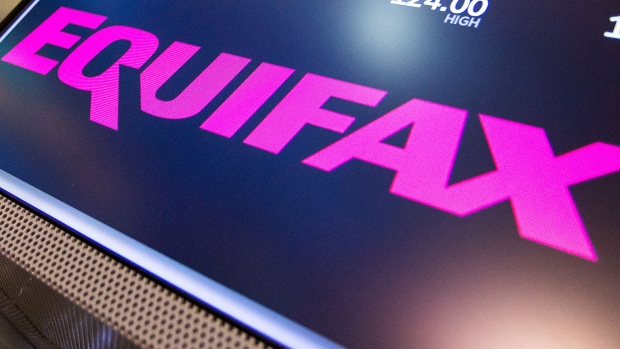High living costs 'jeopardizing' financial security of renters, mortgage owners: survey
, BNN Bloomberg\
A new survey says that Canadians, particularly those with rent or mortgage payments, are delaying retirement savings to deal with higher living costs.
The new survey from Co-operators, released Tuesday, found that higher living costs had a larger impact on renters saving for retirement. In total, 77 per cent of renters indicated they either have not yet started saving for retirement or have not saved as much as they had planned. More than half of respondents with mortgage payments, 51 per cent, indicated they had saved less than planned for their retirement.
“Canadians are facing a precarious and challenging situation as they try to prioritize their spending. As a result, many are putting their retirement at risk, especially those who pay a mortgage or rent,” Rob Wesseling, the president and CEO of Co-operators, said in the release.
“This is a clear signal that today’s economic strain is jeopardizing the long-term financial security of most Canadians.”
The survey found homeowners without a mortgage found it less difficult to accumulate retirement savings, with 76 per cent indicating they have met their retirement savings goals, the survey found. Additionally, 32 per cent of respondents in that demographic indicated they have exceeded their retirement savings expectations.
More than half of homeowners without a mortgage, 57 per cent, said they believe their registered retirement savings plan (RRSP) and savings will be sufficient to fund their retirement. However, the survey found that only 28 per cent of mortgage owners and 22 per cent of renters believed their savings and RRSP would be enough to cover their retirement costs.
“These survey results show that Canadians are facing a tough choice – paying for living expenses today or putting some money away for tomorrow,” Jessica Baker, the executive vice-president of retail wealth at Co-operators, said in the release.
Amid higher living costs, 43 per cent of renters and 23 per cent of mortgage owners indicated in the survey that they are unsure about how they will fund their retirement. Meanwhile, 13 per cent of mortgage-free homeowners face uncertainty about funding their retirement plans.
Methodology:
Results were derived from an online survey with 1,500 participants across Canada between Jan. 24 to Jan. 30.
Most Canadian mortgage owners concerned about payments, survey finds
, BNN Bloomberg

A new survey found the majority of homeowners share concerns about making their mortgage payments due to increased interest rates.
According to the data from Ratehub.ca, 67 per cent are worried about paying their mortgage once their next renewal comes up, while 69 per cent of homeowner respondents reported that their mortgage has been generally more challenging to pay in the last two years.
The survey also found that homeowners made major shifts in their financial decisions to compensate for the higher interest rate environment.
Penelope Graham, director of content at Ratehub.ca, says homeowners continue to look for numerous options to mitigate the impact of the challenging rate environment.
“It’s evident that mortgage holders facing a more challenging rate environment (and) upon renewal are exploring options to mitigate the impact – notably, nearly 29 per cent say they plan to refinance their mortgage loans,” she said in a statement sent to BNNBloomberg.ca.
The data found that 24 per cent of surveyed homeowners considered downsizing their home, while 29 per cent considered refinancing their mortgage. Other major decisions included tightening other areas of their budget (54 per cent) or considering a switch to an alternative lender to help cover costs (17 per cent).
“This can prove to be an effective way to offset higher rates, either by switching to a lender with more favourable term features, extending their amortization, or pulling out built-up equity in order to help with higher monthly payments,” Graham said in the statement.
She added that higher mortgage rates are “reducing borrowers’ spending power.”
The survey found that the majority of respondents (65.1 per cent) have a fixed mortgage rate, while 34.9 per cent have a variable mortgage rate.
Rateshub.ca also reported that 62.6 per cent of respondent homeowners will get a fixed mortgage rate at renewal, and 37.8 per cent will get a variable mortgage rate.
“Fixed mortgage rates continue to be the most common choice for borrowers, even as rates have soared since early 2022,” Graham explained. “This reflects borrowers’ desire for stability in a volatile marketplace, even as expectations grow for lower variable rates in the near future.”
Methodology:
Ratehub.ca’s 2023 Mortgage Survey of 2,651 adults was conducted December 3, 2023 - December 31, 2023 by Ratehub.ca. Adults 18 years of age and older residing in Canada were surveyed using an online research panel method across a combination of desktop, mobile and tablet devices.
Rising loan delinquencies bring pain to BMO, Scotiabank results
, Bloomberg News
BANK OF MONTREAL (BMO:CT)
REAL-TIME QUOTE. Prices update every five seconds for TSX-listed stocks
Earnings at Bank of Montreal and Bank of Nova Scotia were marred by increasingly cash-strapped consumers and businesses amid a challenging economic landscape.
The two Toronto-based banks — the first of the big Canadian lenders to report fiscal first-quarter results — diverged in their results, with BMO missing estimates on lower capital-markets, insurance and corporate-services revenue and Scotiabank topping expectations. Still, both lenders set aside more money for potentially bad loans as higher interest rates continue to hurt credit quality, with missed payments beginning to mount.
Scotiabank’s provisions for credit losses rose to $962 million (US$713 million), more than the $922 million expected by analysts, while BMO’s provisions totaled $627 million, far more than the $514.2 million forecast.
Scotiabank pointed to higher impaired provisions in its international business as well as for Canadian auto loans and unsecured lines of credit, while BMO detailed an increase in impaired provisions for consumer loans, credit cards and business and government loans.
“Higher delinquencies across most of our retail portfolios this quarter reflect the challenging macroeconomic environment,” Phil Thomas, Scotiabank’s chief risk officer, said on a conference call with analysts.
His counterpart at BMO, Piyush Agrawal, said the ongoing impact of tighter monetary policy is to blame for an increase in impaired loan provisions.
“Consumer loan losses, in both Canada and the U.S., reflect higher delinquencies in credit cards and other personal loans, reflecting increases in customer insolvencies, which in Canada are now above pre-pandemic levels,” Agrawal said.
Still, executives at both lenders said they continue to see the credit situation as manageable for their Canadian clients, noting that many households still have savings to draw on and have trimmed their discretionary spending.
Clients whose mortgage payments have already gone up “are selectively choosing to prioritize those payments,” BMO Chief Financial Officer Tayfun Tuzun said in an interview. “That’s the reason why I think, in some segments, you are seeing higher card delinquencies, and spend levels are also declining.”
An eventual lowering of interest rates by both the Federal Reserve and the Bank of Canada as soon as this year should ease pressure on consumers, Tuzun said.
“But, in the meantime, we will probably be in this environment where delinquencies will be a bit higher,” he said.
BMO shares fell 4.6 per cent to $120.99 at 2:10 p.m. in Toronto after earlier slumping as much as 5.8 per cent, their biggest intraday decline since December 2022. Scotiabank shares climbed 3 per cent to $65.81.
On the mortgage front, soaring interest rates led to a wave of ultra-long home loans in Canada, hitting borrowers who have fixed monthly payments but variable interest rates. Many of those clients are no longer paying down any principal, extending the length of time it would take to repay their loans. When homeowners go to renew their mortgages, typically after five years, they are expected to face significantly higher payments.
BMO said Tuesday that clients with so-called negatively amortizing mortgages have dropped to 24.7 per cent of the bank’s book in the first quarter from 32.4 per cent a year earlier.
Scotiabank doesn’t allow for negatively amortizing mortgages, but said Tuesday that its customers with variable-rate home loans have already seen an average increase in monthly payments of more than 50 per cent since the Bank of Canada began its rate-hiking cycle in early 2022.

